Etching the power of the feminine form
Ongoing painting exhibition by Amol Pawar sees art meet myths as tales are told in myriad colors.

Red pre-dominates the canvas, often intermingled with stark blues or dire blacks. Amol Pawar in his ongoing art exhibition at the Jehangir Art Gallery showcases his series entitled Shakti. The exhibit attempts at showcasing ‘shakti’ as a concept that personifies the divine feminine creative power.
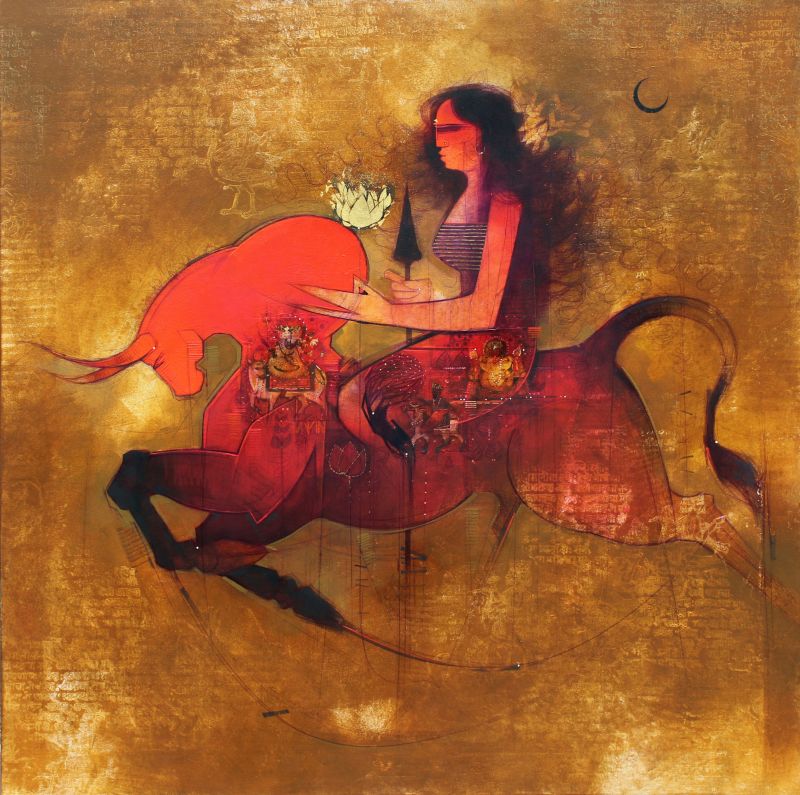 Ambika Mother of Universe
Ambika Mother of Universe
The cerulean on gold in the painting titled Ambika – Mother of the Universe is contrasted by the black, grey and red of Hanumanji that forms one of the central pieces of his exhibit. His painting, The First Family portrays Rudra with his consort Devi and child the elephant-headed Ganesha, painted in luxuriant tones of azure, red and gold represents the familial in shades that have a sharper effect on the eye. His canvases both exude a gentle harmony in the portrayal of its subjects and yet are strangely mellow in their symbolism of the silent yet powerful feminine.
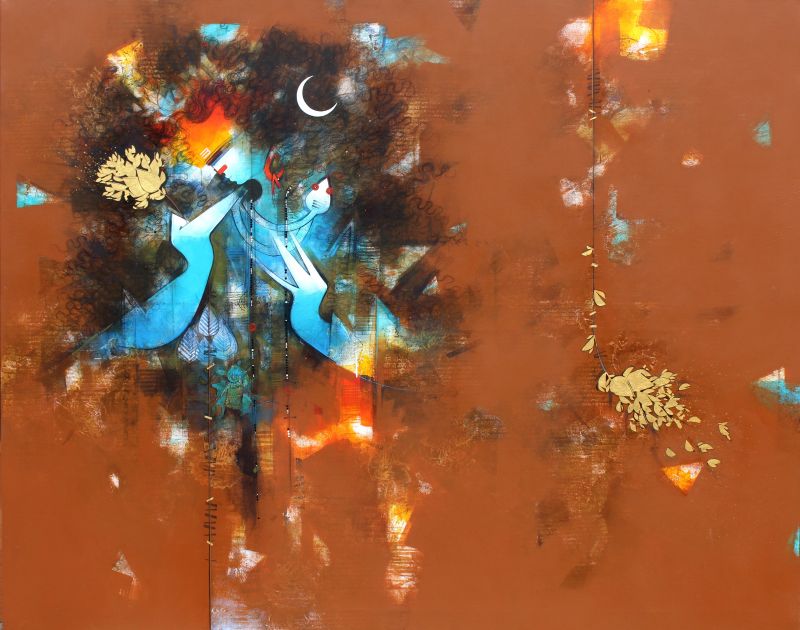 Ashutosh One Who Fulfills Wishes
Ashutosh One Who Fulfills Wishes
Shakti, the exhibition not only portrays the intrinsic female form but also in the male and animal form in its potential, non-manifest nature.
Speaking about his present exhibition, Amol says, “My current exhibition’s concept is Shakti or Power, as a concept that personifies the divine feminine creative power. In Hindu culture, there is lot of importance to mythology. As a kid you grow up listening to various stories of mythology which inspired us. I am trying to depict them in my painting series.”
 Devi Vishwarupa
Devi Vishwarupa
Here, speaking about his artistic style, he observes, “In my paintings, I used different style of textures, creative forms, small icons, calligraphy.” He goes on to elaborate that he has even used 24 karat gold which signifies the richness and purity of thought and intention making the painting more beautiful.
“Every painting has a story to tell. The background, textures are part of this story.”
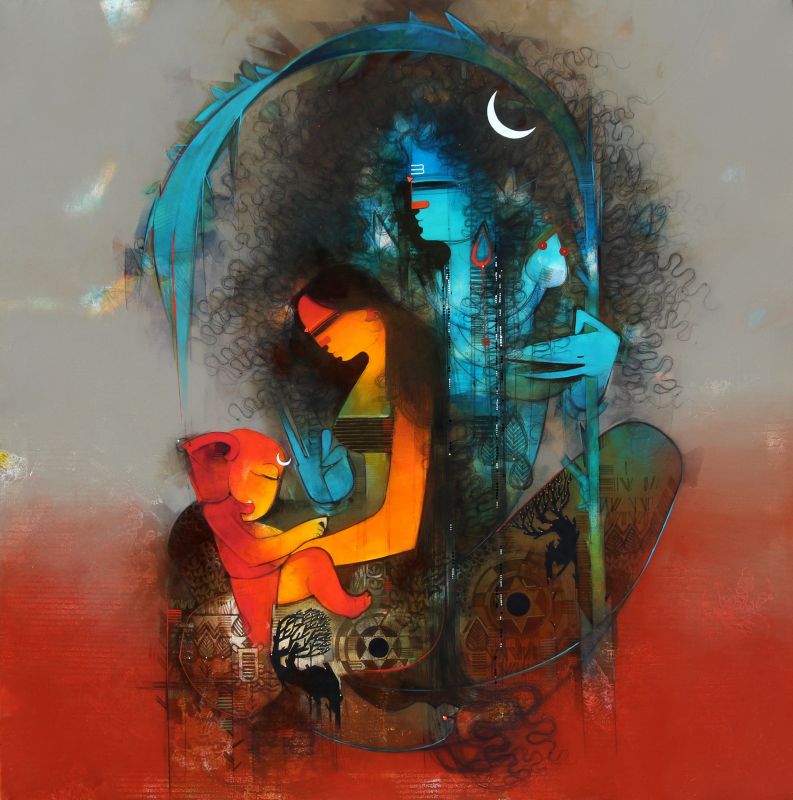 First Family
First Family
Look closely and you will see that the animal forms have a more conformist shape, they are determined and each symbol has a story to tell.
“I use motifs from Indian mythology as tattoos on the body, elements of nature, miniature style, geometric lines,” he says, adding, “My paintings are done in earth tone. They relate to our roots. I even use calligraphy which has its own beauty. In the time of everything digital the beauty of hand written words is losing ground. All old scriptures/literature were hand written. I try to capture this beauty of these hand written words through my paintings.”
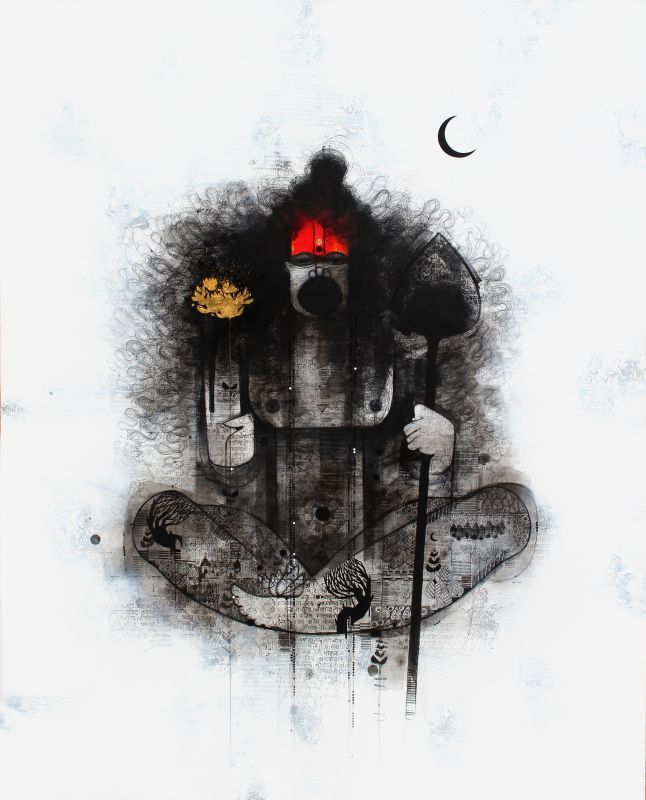 Hanuman
Hanuman
The paintings of Amol are in essence etchings that are trying to convey tales and folklores. Amol conforms to this view. “I want my paintings to tell people its story, take them to another place. The way scenes flicker in front of us while travelling," he says, before adding, “As you watch the painting closely, notice the details the story of my painting will unfold itself.”
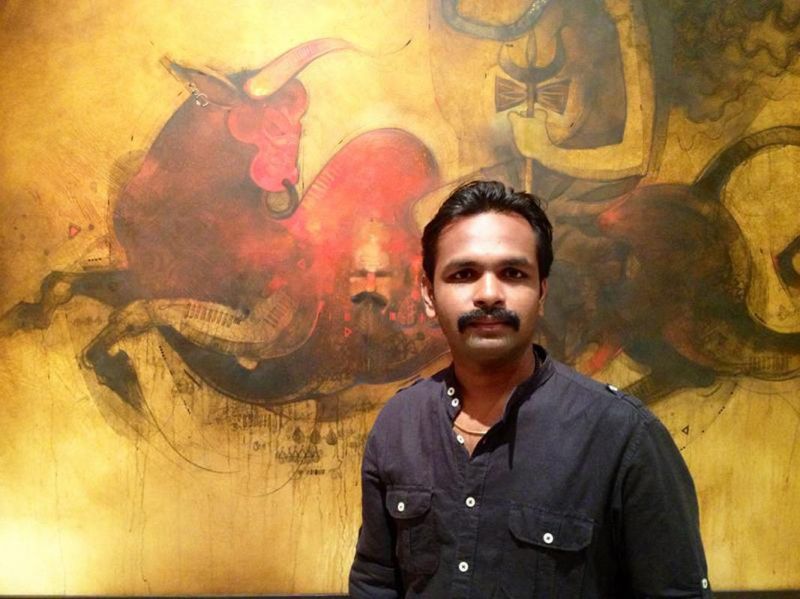 Amol Pawar
Amol Pawar
The colours that each canvas resonates with also reflect the artist's psyche. Amol has a penchant for using earthy tones and shades. They are beautiful but somewhat calculated as if the artist conspires to be closer to the sensitivity of nature and yet knows that it may be fleeting. And yet there is a stroke of brilliance with which he breaks his own monotony with brilliance in crimson, azure and sapphires.
The exhibit, a brilliant and evocative series that has myriad layers of comprehension and complexities in the male-female relationship will continue till July 3.
Ask him what art means to him and Amol concludes, “My paintings reflect my beliefs on religiousness and spirituality, and are often a reflection of my environment. I would like to consider my work as a journey in exploring the rhythm of life.”
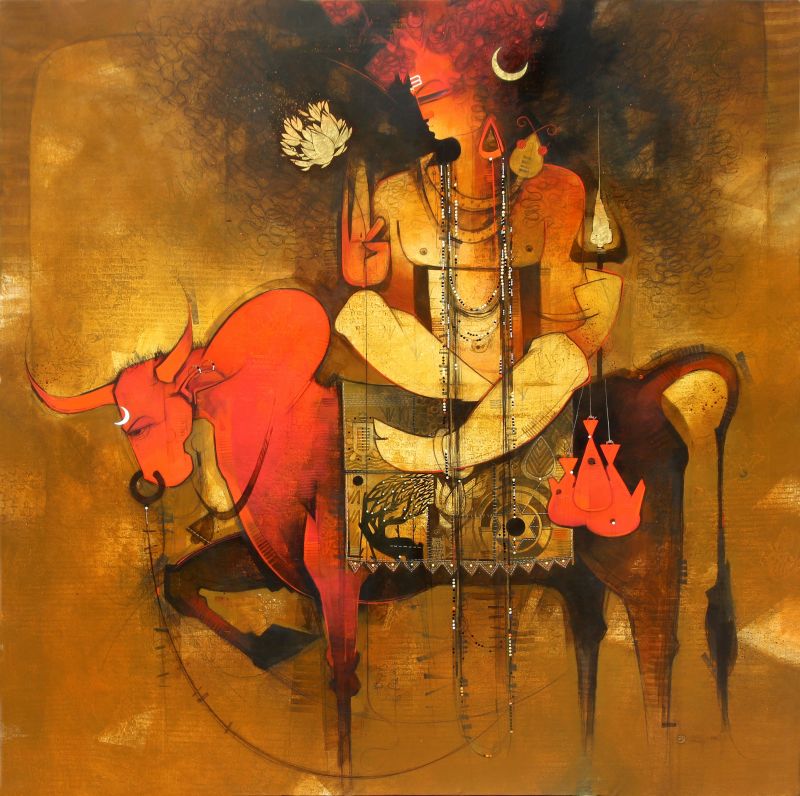 Shiva
Shiva
